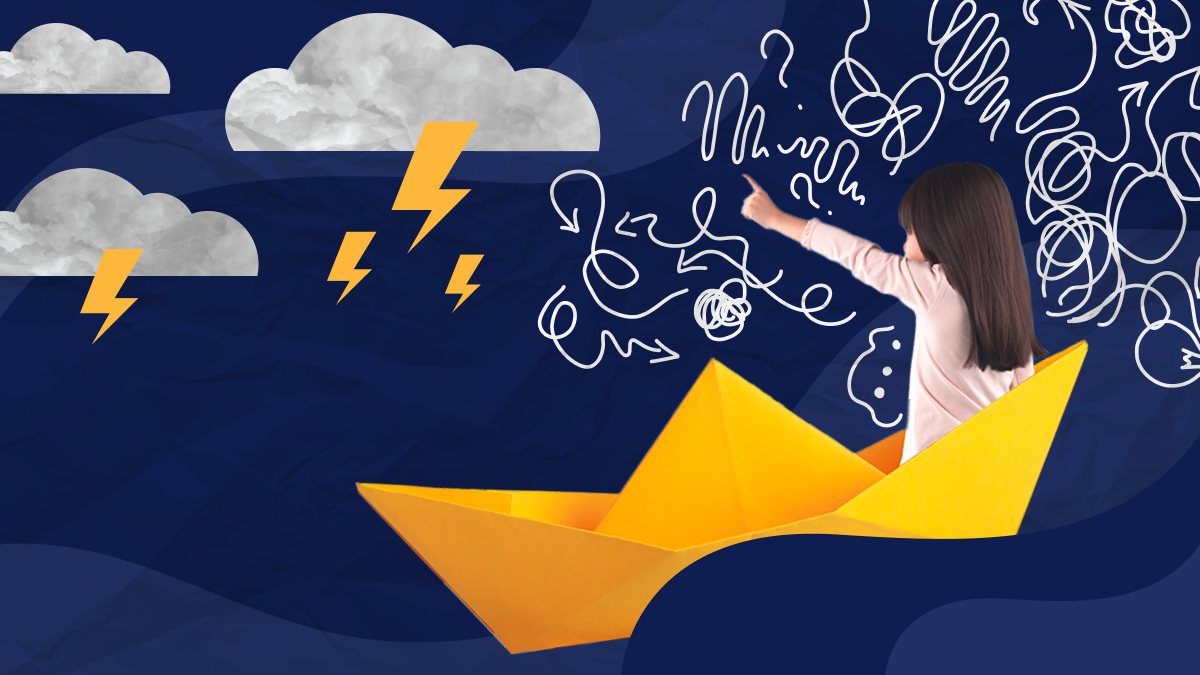Key points
- Many children have thoughts that bother them sometimes, and they might feel like they have to do something about those thoughts even if the action doesn't make sense.
- Having obsessive-compulsive disorder (OCD) means having unwanted thoughts and behaviors that happen frequently, take up a lot of time, interfere with activities, or make children very upset.
- The first step to treatment is to talk with a health care provider to arrange an evaluation.

Overview
Get help now
If you or someone you know is struggling or in crisis, help is available. Call or text 988 or chat 988lifeline.org.
Many children occasionally have thoughts that bother them, and they might feel like they have to do something about those thoughts, even if their actions don't actually make sense. For example, they might worry about having bad luck if they don't wear a favorite piece of clothing. For some children, the thoughts and the urges to perform certain actions persist, even if they try to ignore them or make them go away.
Children may have an obsessive-compulsive disorder (OCD) when unwanted thoughts—and the behaviors they feel they must do because of the thoughts—happen frequently, take up a lot of time (more than an hour a day), interfere with their activities, or make them very upset. The thoughts are called obsessions. The behaviors are called compulsions.
Signs and symptoms
Having OCD means having obsessions, compulsions, or both. These can include having:
- Unwanted thoughts, impulses, or images that occur over and over and which cause anxiety or distress
- To think about or say something over and over (for example, counting, or repeating words over and over silently or out loud)
- To do something over and over (for example, handwashing, placing things in a specific order, or checking the same things over and over, like whether a door is locked)
- To do something over and over according to certain rules that must be followed exactly in order to make an obsession go away
Children do compulsive behaviors because they have the feeling that the behaviors will prevent bad things from happening or will make them feel better. However, the behavior is not typically connected to actual danger of something bad happening, or the behavior is extreme, such as washing hands multiple times per hour.
A common myth is that OCD means being really neat and orderly. Sometimes, OCD behaviors may involve cleaning, but many times someone with OCD is too focused on one thing that must be done over and over, rather than on being organized. Obsessions and compulsions can also change over time.
It is not known exactly why some children develop OCD. There is likely to be a biological and neurological component, and some children with OCD also have Tourette syndrome or other tic disorders.
Treatment for OCD
The first step to treatment is to talk with a health care provider to arrange an evaluation.
- A comprehensive evaluation by a mental health professional will determine if the anxiety or distress involves memories of a traumatic event that actually happened, or if the fears are based on other thoughts or beliefs.
- The mental health professional should also determine whether someone with OCD has a current or past tic disorder.
- Anxiety or depression and disruptive behaviors may also occur with OCD.
Treatments can include cognitive-behavioral therapy and medication.
- Cognitive-behavioral therapy helps the child identify and cope with negative thoughts. It also includes gradually exposing children to their fears in a safe setting; this helps them learn that bad things do not really occur when they don't do the behavior, which eventually decreases their anxiety.
- Cognitive-behavioral therapy alone can be effective for the majority of children who experience OCD, but some children are treated with a combination of behavior therapy and medication.
- Families and schools can help children manage stress by being part of the therapy process and learning how to respond supportively without accidentally making obsessions or compulsions more likely to happen again.
Get help finding treatment
Pediatricians and other health care professionals who interact regularly with children can help support children's mental health and work with families to identify when specialist care is needed for diagnosis and treatment. To find a pediatrician near you, visit HealthyChildren.org, a service of the American Academy of Pediatrics (AAP) practice organization.
Families can also seek out referrals for a mental health provider through multiple avenues, including the child's school, a primary care provider, or through health insurance. They can also ask for advice from trusted family or friends who may have some experience with providers in the local area.
If you need insurance coverage, learn more about enrolling in Medicaid, Children's Health Insurance Program (CHIP), or a Marketplace plan at HealthCare.gov. If your child does not qualify for insurance coverage, you can get low-cost health care at a nearby community health center.
Mental health specialists
Here are additional tools to find a health care provider familiar with treatment options:
- Psychologist Locator, a service of the American Psychological Association (APA) Practice Organization.
- Child and Adolescent Psychiatrist Finder, a research tool by the American Academy of Child and Adolescent Psychiatry (AACAP).
- Find a Cognitive Behavioral Therapist, a search tool by the Association for Behavioral and Cognitive Therapies.
- If you need help finding treatment facilities, visit FindTreatment.gov.
Resources
- Obsessive-Compulsive Disorder In Children And Adolescents (aacap.org) - American Academy of Child & Adolescent Psychiatry (AACAP) fact sheet
- Practice Parameters – AACAP healthcare provider guidelines for diagnosing and treating mental health conditions in children and adolescents
- CDC's Mental Health Homepage
